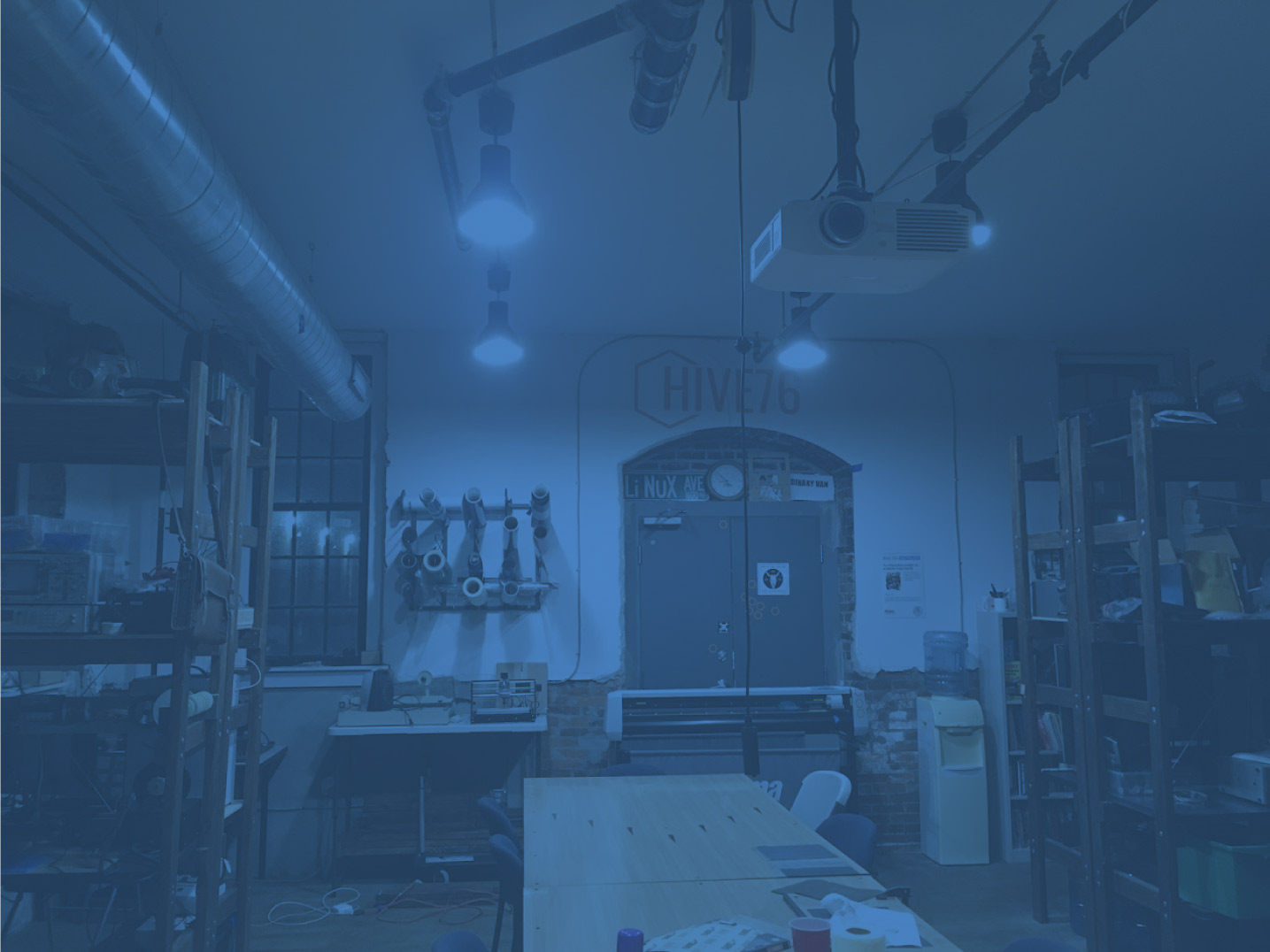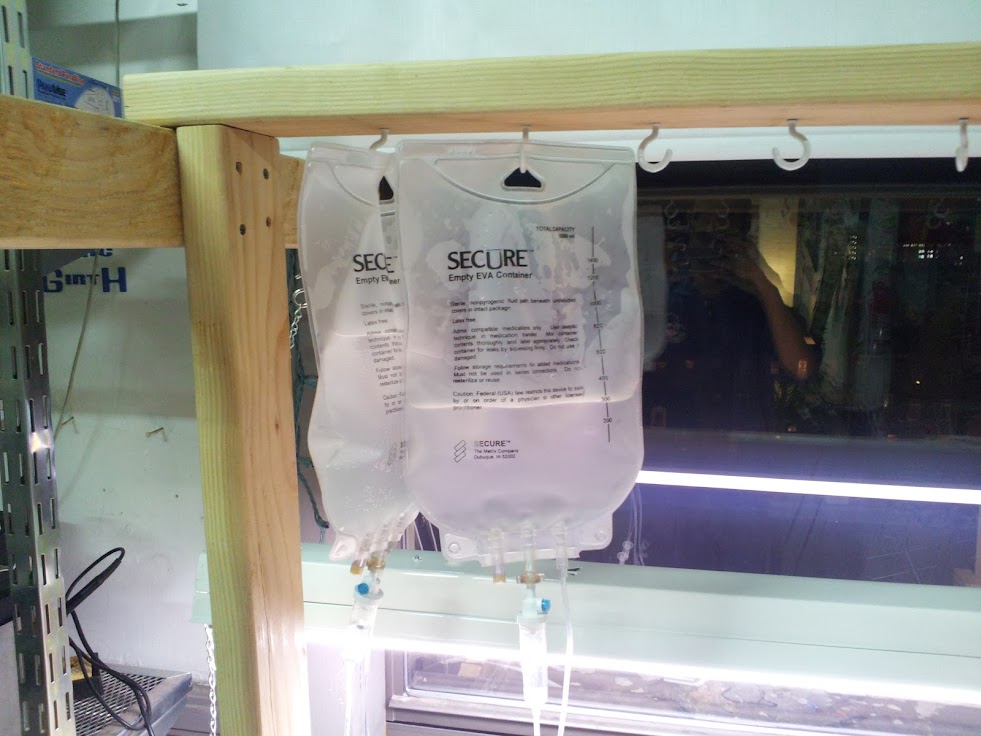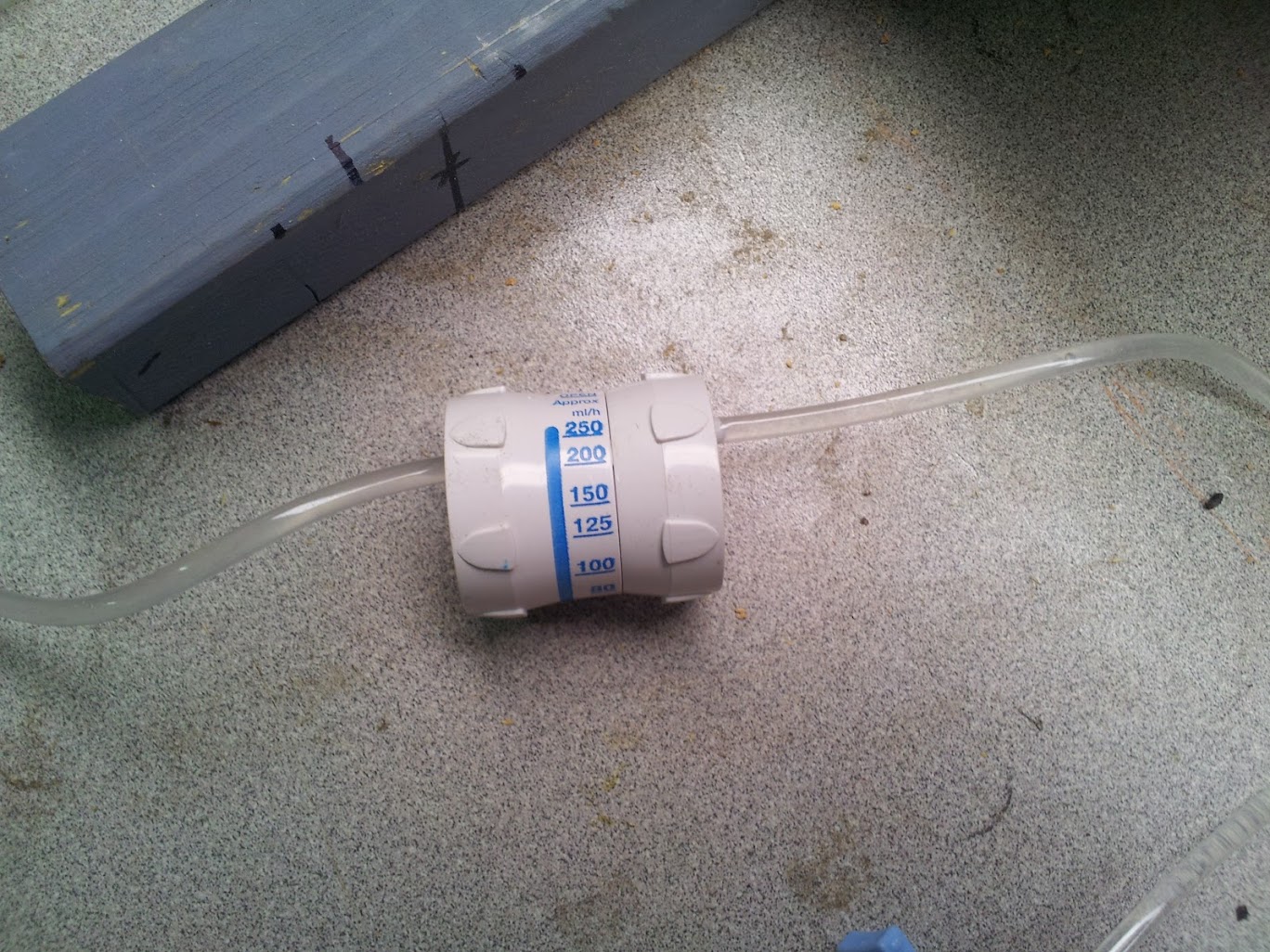
The spinach I was growing managed to complete most of its life cycle. Around a week after my last post I added the nutrient solution to the plants’ water, thats when they really started to take off. I had one hiccup during the test run where I didn’t properly sent the flow rate of one the IV bags and half the nutrient solution was lost. If I was a little less… well lazy that day… I would have replaced it , but I didn’t. So the IV bag ran out of nutrient solution and some of the plants died before they reached maturity. Luckily, the rest of the plants managed to reach their flowering stage. So overall, the IV bags were incredible useful. Thanks Jordan for the idea!
Seeing how classes are starting to pick up, I figure now is a good time to stop the experiment and take some time to look over my notes. But, I hope to have another prototype built by the end of next month. ( Btw, sorry for not being around open house lately to discuss hydroponics, I have a night class that meets at the same time this semester).
Speaking of which, a friend of mine who frequently stops by open house, Ian, has taken the plans of the hydroponic garden I built two years ago and built one of his own at home. Suffice to say, the plants have grown wild and are firmly in control of his bedroom. Given how successful his garden has been, he’s inspired me to dust of my old plans and think about building another, LARGER, set up for just for show (the hydro setup currently at Hive is mainly for experimentation). That’s all for now…











